The True Story of the Man in the Iron Mask
L’Homme au Masque de Fer (the French for “The Man in the Iron Mask”) is the name given to a prisoner arrested in about 1669 and condemned to the cruel fate of having his head clamped within an iron mask, or so the story goes. The legend of the Man in the Iron Mask is based on the true life story of Eustache Dauger. Over time, however, the story became legend, and the legend faded into myth, retold dozens of times in children’s books, novels and movies throughout the world.
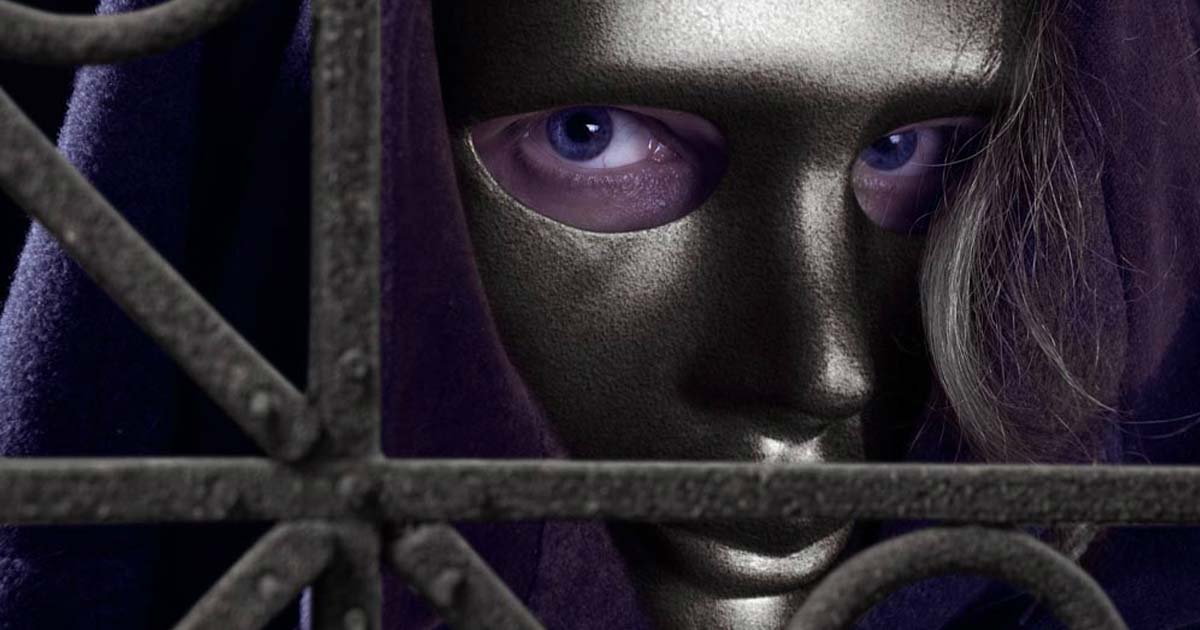
Archival Remnants of the Man in the Iron Mask
Much of what we know about Eustache Dauger comes from the correspondence between his jailer, Bénigne Dauvergne de Saint-Mars, and his superiors in Paris. There is very little information about him prior to his prison time, such as the circumstances of his arrest and how came to be wearing the mask. Incidentally, there is no historical evidence to suggest that the mask was made out of anything but black velvet. It is believed that it was only later that stories came to refer to an iron mask.
The earliest record of the masked prisoner dates to 1669 and was a letter sent from the Marquis de Louvois, King Louis XIV’s minister, to Bénigne Dauvergne de Saint-Mars, governor of the Pignerol prison in Pinerolo, Piedmont, then part of France. In his letter, Louvois informed Saint-Mars that a prisoner named Eustache Dauger was due to arrive in the next month or so (late August of that year).
- Scold’s Bridles: 12 Torturous and Humiliating Shame Masks of the Middle Ages (In Pics)
- No Gossiping, Gluttony, Lying, or Eavesdropping! European Metal Masks Would Shame You into Good Behavior
This missive revealed several interesting notes, including one concerning the accommodation of the prisoner. Louvois instructed Saint-Mars to prepare a cell with multiple doors, one closing upon the other, which were to prevent anyone from the outside listening in. Only one visit a day was authorized to the governor, in order to provide food and whatever else the prisoner needed.
The prisoner was also to be told that if he spoke of anything other than his immediate needs, he would be killed, but, as stated by Louvois, the prisoner should not require much since he was “only a valet”. According to many versions of this legend, the prisoner wore the mask at all times.
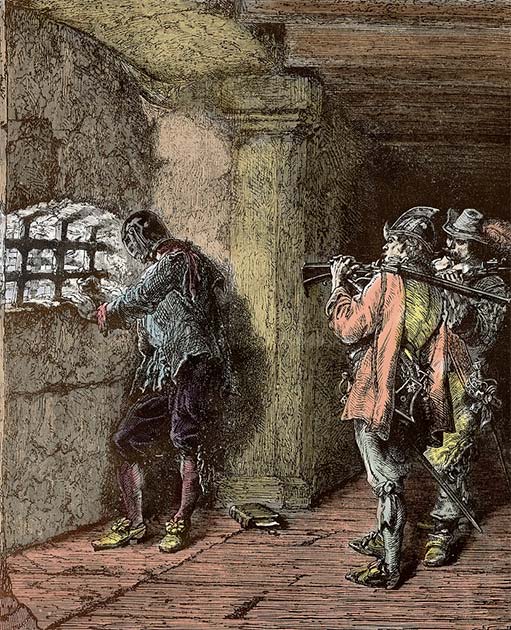
Man in the Iron Mask by Neuville, 1872. (Public domain)
Who Was the Man in the Iron Mask?
According to records, Eustache Dauger really did serve as valet to another guest of the prison, Nicolas Fouquet, Marquis of Belle-Île, a former superintendent of finances who had been jailed by Louis XIV on the charge of embezzlement. Dauger was allowed to attend the marquis when his main servant, La Rivière, was unwell.
We must consider that Pignerol Prison wasn’t exactly a common jail, but was reserved for a handful of men who were considered an embarrassment to the state. Pignerol, more commonly known as the Fort of Pinerolo, served as a state prison renowned for its use in detaining high-profile political and military prisoners. The site played a significant role during the reign of King Louis XIV of France in the 17th century.
The fact that Dauger served as a valet is a focal point, especially regarding some speculations that Dauger was actually a member of the French royal family. Many researchers and historians have argued that 17th-century protocol made it unthinkable that a man of royal blood would serve as a manservant, casting some doubt on those suggestions that Dauger was related to the king.
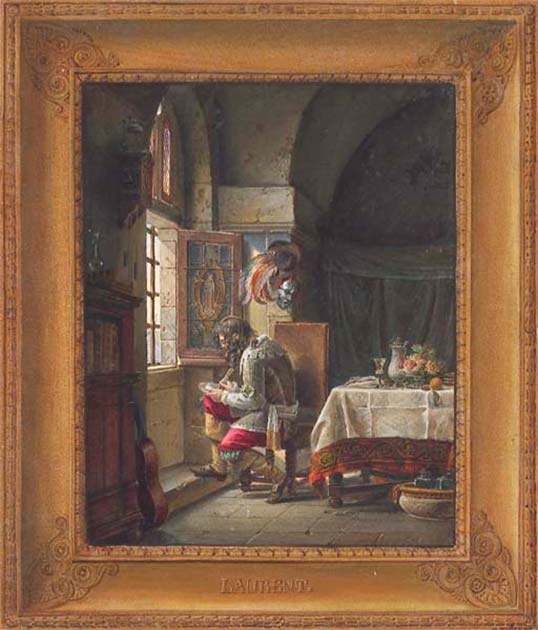
The Man in the Iron Mask by Hilaire Thierry. (Public domain)
The most popular of all the legends regarding this prisoner pertains to his lineage. It has been said that the Man in the Iron Mask was the son of Anne of Austria and Cardinal Mazarin, and therefore an illegitimate half-brother of King Louis XIV, an idea transformed into a book by Alexandre Dumas called The Vicomte de Bragelonne.
However, the book introduced a substantial change: he made the prisoner an identical twin of Louis XIV. The story goes on to say that the man was kept hidden because of his rights to the throne. Twins were a threat to orderly succession, but no one could kill a royal prince, so the second twin was masked and imprisoned. Other stories say that the prisoner was indeed the king’s brother, but not his twin.
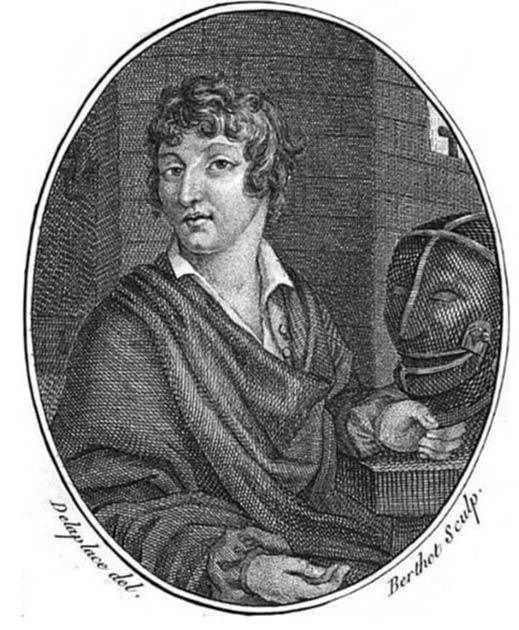
The Man in the Iron Mask, according to Regnault-Warin MJJ, 1804. (Public domain)
Intriguing Coded Letters Reveal Details About Man in the Iron Mask
Another interesting theory belongs to Louis Gendron, a French military historian who came across some coded letters, later passed to Etienne Bazeries in the French Army’s cryptographic department during the 1890s. After three long years of decrypting, Bazeries managed to read some messages in the Great Cipher of Louis XIV.
One of letters written by Louvois referred to a prisoner and identified him as General Vivien de Bulonde and made specific reference to de Bulonde’s crime. De Bulonde was accused of cowardice during the siege of Cuneo in 1691. Worried about the incoming presence of enemy troops from Austria, he ordered a hasty withdrawal, leaving behind his munitions and wounded men.
This made the king furious, who ordered him “to be conducted to the fortress at Pignerol where he will be locked in a cell and under guard at night, and permitted to walk the battlements during the day with a 330 309.” It has been suggested that the “330” stood for masque and the “309” represented a “full stop.” However, this theory has not been verified and the dates are also inconsistent with other records.
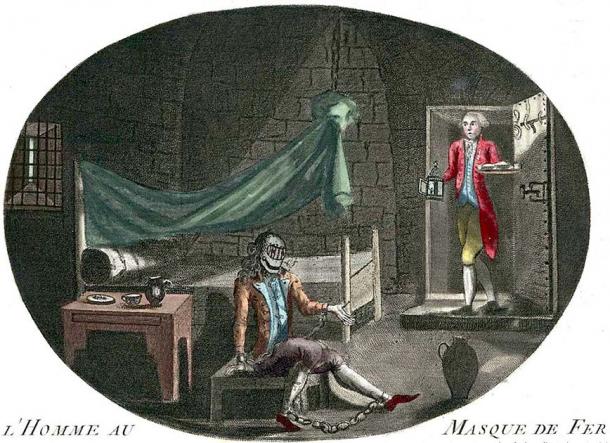
“L’Homme au Masque de Fer” (“The Man in the Iron Mask”). Anonymous print (etching and mezzotint, hand-colored) from 1789. (Public domain)
Alternative Theories About the Man in the Iron Mask’s True Identity
Another candidate, much favored in the 1800s, was Nicolas Fouquet’s fellow prisoner Count Ercole Antonio Mattioli. The count was a diplomat and minister of Ferdinand Charles, Duke of Mantua, who had been entrusted with the secret negotiation of the Treaty of Nijmegen of 1678, whereby the impoverished Duke was to deliver the stronghold of Casale over to France in return for 100,000 écu.
But, as soon as the agreement was signed, Mattioli nullified its effect by betraying the secret to several foreign courts. Furious at having been tricked, Louis XIV had him quietly abducted and imprisoned at Pinerolo (1679). It is generally agreed, however, that Matthioli died in the Îles Sainte-Marguerite in April 1694 and that the prisoner in the mask was indeed Eustache Dauger.
Eustache Dauger: The Man in the Iron Mask?
The theory that the Man in the Iron Mask is Eustache Dauger is the most accepted. However, whether this was his real name or an alias is unclear. It is well-known that a man named Eustache Dauger de Cavoye, the son of a captain in Cardinal Richelieu’s guards, was born in 1637. Later he joined the royal army, but eventually he was forced to resign in disgrace after killing a young boy in a drunken brawl, and was subsequently incarcerated.
- 9 Methods of Ancient Punishment That’ll Make You Squirm
- Medieval Torture: The Terrifying Threat of Twisting off Limbs and Burning Flesh
Shortly after complaining to his sister about his treatment in prison in 1678, the king issued an edict that de Cavoye should no longer be allowed to communicate with anyone unless a priest was present.
The problem with the theory that de Cavoye is the same Eustache Dauger as the man said to be punished with the iron mask, is that he de Cavoye was being held in Saint-Lazare prison, while the Man in the Iron Mask was in Pignerol. Furthermore, there is significant evidence that de Cavoye died in the 1680s, well before the more famous Eustache Dauger.
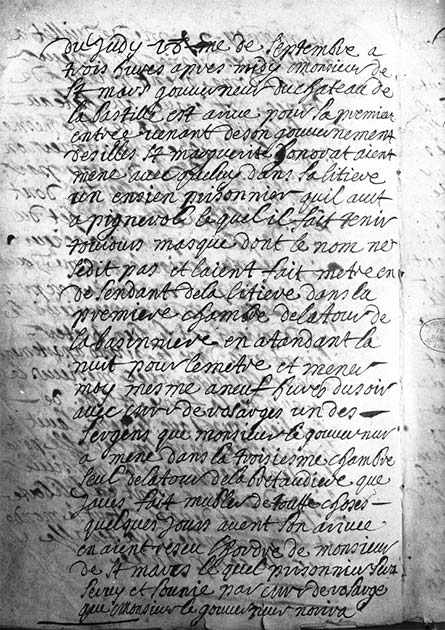
The imprisonment of the Man in the Iron Mask as recorded in the Bastille prison register on in 1698. (Public domain)
Death of the Man in the Iron Mask
On September 18, 1698, Saint-Mars took up his new post as governor of the Bastille prison in Paris, bringing the masked prisoner with him. He was placed in a solitary cell in the pre-furnished third chamber of the Bertaudière tower. The prison’s second-in-command, de Rosarges, was to feed him. Lieutenant du Junca, another officer of the Bastille, noted that the prisoner wore “a mask of black velvet.”
The Man in the Iron Mask died on November 19, 1703, and was buried the next day under the name of Marchioly. All his furniture and clothing were reportedly destroyed afterwards, the walls of his cell scraped and whitewashed, and everything made of metal that the man had possessed was melted down.
So, in the end, who he really was, whether he was actually guilty of a legitimate crime, or even whether he truly was forced to wear an iron mask all the time, may never be known. It is possible that the Man in the Iron Mask was just an ordinary citizen named Eustache Dauger, who angered the king, but not enough to have him killed.
This poor soul could never have imagined that his dismal life of captivity would one day become an epic of intrigue or that his memory (though anonymous), would survive for many years after he passed.
Top image: The Man in the Iron Mask. Source: Igor Normann / Adobe Stock
By Federico Cataldo
Related Post
A shocking documentary proves that mermaids do exist
SHOCKING Revelation: Thuya, Mother of Queen Tiye, Was the Grandmother of Akhenaten and Tutankhamun—What Ancient Egyptian Secrets Did She Leave Behind?
Breaking News: Astonishing Discoveries at Karahan Tepe Confirm an Extraterrestrial Civilization is Hiding on Earth, and NO ONE Knows!
Breaking News: Researchers FINALLY Discover U.S. Navy Flight 19 After 75 Years Lost in the Bermuda Triangle!
NASA’s Secret Investigation: Uncovering the Astonishing Mystery of the UFO Crash on the Mountain!
Explosive UFO Docs LEAKED: Startling Proof That Aliens Ruled Ancient Egypt!